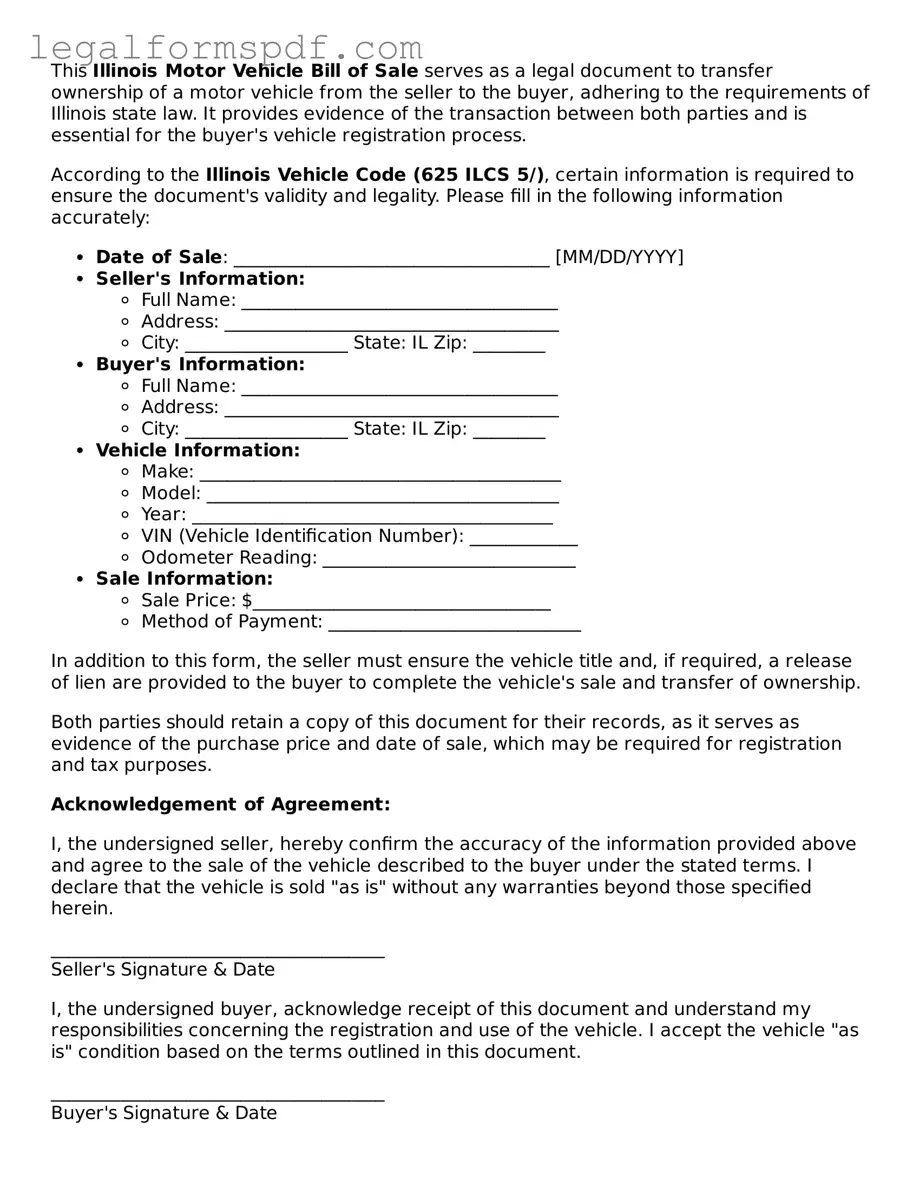What is an Illinois Motor Vehicle Bill of Sale?
An Illinois Motor Vehicle Bill of Sale is a legal document that records the sale and transfer of ownership of a motor vehicle from the seller to the buyer. It includes details about the seller, the buyer, the vehicle, and the sale, such as the date and purchase price. This document serves as proof of transaction and is essential for the buyer's vehicle registration process.
Do I need a Motor Vehicle Bill of Sale to sell a car in Illinois?
Yes, in Illinois, a Motor Vehicle Bill of Sale is highly recommended when selling a car. Although not always mandated by law, it provides both the seller and the buyer with a record of the sale, protecting the interests of both parties. For registration and title transfer purposes, the Illinois Secretary of State's office may require this document.
What information must be included in an Illinois Motor Vehicle Bill of Sale?
An Illinois Motor Vehicle Bill of Sale should include the full names and addresses of both the seller and the buyer, a detailed description of the vehicle (including make, model, year, and VIN), the sale date, the sale price, signatures of both parties, and any other agreements or warranties made at the time of sale.
How do I obtain an Illinois Motor Vehicle Bill of Sale form?
An Illinois Motor Vehicle Bill of Sale form can be downloaded from the Illinois Secretary of State's website or from various legal websites that provide state-specific forms. It's important to ensure the form complies with Illinois state requirements. Alternatively, a private sale can be documented using a generic form or drafting one that meets state criteria.
Is notarization required for a Motor Vehicle Bill of Sale in Illinois?
Notarization of a Motor Vehicle Bill of Sale is not generally required in Illinois, but it is recommended. A notarized Bill of Sale provides an extra layer of protection, verifying the identity of the parties involved and ensuring that the document's signatures are legitimate.
How does a Motor Vehicle Bill of Sale protect the buyer?
A Motor Vehicle Bill of Sale protects the buyer by documenting the transaction's specifics, such as the vehicle's condition, the purchase price, and the sale date. It serves as evidence that the buyer legally acquired the vehicle, which is crucial for resolving any disputes that may arise regarding ownership or terms of sale. Furthermore, it is necessary for registering the vehicle in the buyer's name.
How does a Motor Vehicle Bill of Sale protect the seller?
For the seller, a Motor Vehicle Bill of Sale acts as proof that he or she has legally transferred the ownership of the vehicle to the buyer. It can protect the seller from any future liabilities related to the vehicle, showing that the seller is no longer responsible for it from the date of sale specified in the document.
Can I use a generic Bill of Sale form for a motor vehicle transaction in Illinois?
While a generic Bill of Sale form can be used for a motor vehicle transaction in Illinois, it's important to ensure that the form includes all required information specific to Illinois law. To avoid potential issues during the vehicle's registration or if disputes arise, using a state-specific form or ensuring all pertinent details are included in a generic form is advisable.
